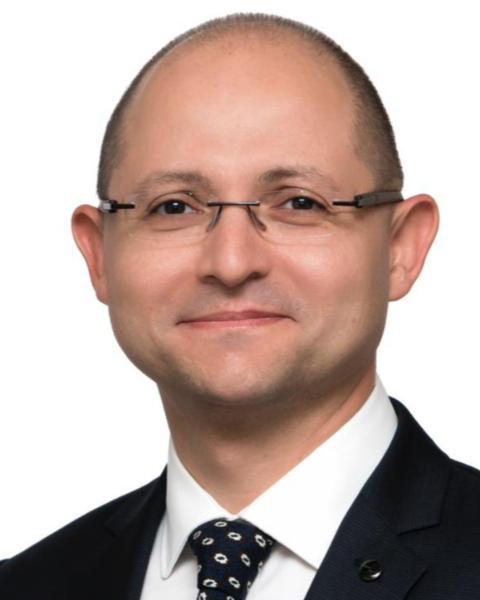PQA 10 - PQA 10 Head & Neck Cancer and Health Services Research/Global Oncology Poster Q&A
3726 - Global Interobserver Variations of Clinical Target Volume (CTV) Delineation among International Experts in Given Standard Gross Tumor Volume (GTV) and Organs at Risk (OAR) Volumes in Lung Cancer
Wednesday, October 2, 2024
10:30 AM - 11:45 AM ET
Location: Hall C
Screen: 29

Ugur Selek, MD, FASTRO, Prof.
Koc University School of Medicine
Istanbul, Turkey
Presenter(s)
U. Selek1, K. S. Hu2, H. Tatli3, J. R. Palta4, and A. Jhingran5; 1Koc University, School of Medicine, Department of Radiation Oncology, Istanbul, Turkey, 2Department of Radiation Oncology, NYU Langone Health, New York, NY, 3RTIMEA Education and Training Department, Elekta Instrument AB, Istanbul, Turkey, 4Department of Radiation Oncology, Virginia Commonwealth University, Richmond, VA, 5Department of Radiation Oncology, The University of Texas MD Anderson Cancer Center, Houston, TX
Purpose/Objective(s): To define the extent and pattern of interobserver variations of clinical and planning target volumes (CTV and PTV) delineation among international experts in predefined primary and nodal integral gross tumor volumes (iGTV) and organs at risk (OAR) volumes in lung cancer Materials/
Methods: Experts were invited by email globally from ASTRO, ESTRO, IAEA, FARO, and TROD for this study, and DICOM images of two anonymized cases (T1N0M0 adenocancer: Stereotactic ablative body radiotherapy, SABR & T2aN2M0 adenocancer: LA-NSCLC) were delivered online via cloud large file share to each colleague. The average data set included delineated iGTV based on 4 D-CT scan including 10 respiratory phases of primary tumor for both cases & nodal disease for LA-NSCLC, and OAR to decrease the discrepancy and interobserver variability for this step. Experts were asked to delineate the planning tumor volumes (PTV) for SABR and CTV & PTV for LA-NSCLC based on their institutional guidelines. We used a systematic process to create and analyze a consensus atlas among multiple observers facilitated by ProKnow DS Version 1.35.2 (Precision radiation medicine company, Golden Rule Version 1.2.8531.2131); forming 50% ground truth area common in all participants contours. The comparison metrics encompassed matching volume, missing volume, extra volume, Dice coefficient for similarity, and mean differences in displacement along the X, Y, and Z axes.
Results: 25 experts participated the study. SABR: The PTV analysis revealed a notable level of concordance (mean DSC = 0.94±0.07) between the delineations by experts and the consensus, accompanied by minimal volume disparity. LA_NSCLC: A high level of similarity (mean DSC = 0.84±0.11) existed between the CTV delineations of experts and the consensus, while the experts contours exhibited an additional volume averaging 30.07±39.99 cc compared to the consensus, indicating heterogeneity within the group. Most of the experts trimmed their CTVs from chestwall and airways. A high degree of similarity (mean DSC = 0.87±0.09) characterized the PTV delineations in comparison to the consensus. However, discrepancies in missing (median 8.69, mean 21.11) and additional volume (median 20.52, mean 43.64) values suggested heterogeneity within the group, with a notable standard deviation (31.28 for missing, 53.43 for extra volume).
Conclusion: Even in an environment of predefined primary iGTV based on 4D CT simulation for SABR, there is no 100% consensus in PTV and the discrepancy with interobserver variability for CTV was evident if more than one target present as nodal iGTV in addition to primary iGTV, accordingly which can potentially effect and change the PTV to lead into different OAR scenarios; appealing the need for standardized peer review processes and more structured guidelines for CTV.
Purpose/Objective(s): To define the extent and pattern of interobserver variations of clinical and planning target volumes (CTV and PTV) delineation among international experts in predefined primary and nodal integral gross tumor volumes (iGTV) and organs at risk (OAR) volumes in lung cancer Materials/
Methods: Experts were invited by email globally from ASTRO, ESTRO, IAEA, FARO, and TROD for this study, and DICOM images of two anonymized cases (T1N0M0 adenocancer: Stereotactic ablative body radiotherapy, SABR & T2aN2M0 adenocancer: LA-NSCLC) were delivered online via cloud large file share to each colleague. The average data set included delineated iGTV based on 4 D-CT scan including 10 respiratory phases of primary tumor for both cases & nodal disease for LA-NSCLC, and OAR to decrease the discrepancy and interobserver variability for this step. Experts were asked to delineate the planning tumor volumes (PTV) for SABR and CTV & PTV for LA-NSCLC based on their institutional guidelines. We used a systematic process to create and analyze a consensus atlas among multiple observers facilitated by ProKnow DS Version 1.35.2 (Precision radiation medicine company, Golden Rule Version 1.2.8531.2131); forming 50% ground truth area common in all participants contours. The comparison metrics encompassed matching volume, missing volume, extra volume, Dice coefficient for similarity, and mean differences in displacement along the X, Y, and Z axes.
Results: 25 experts participated the study. SABR: The PTV analysis revealed a notable level of concordance (mean DSC = 0.94±0.07) between the delineations by experts and the consensus, accompanied by minimal volume disparity. LA_NSCLC: A high level of similarity (mean DSC = 0.84±0.11) existed between the CTV delineations of experts and the consensus, while the experts contours exhibited an additional volume averaging 30.07±39.99 cc compared to the consensus, indicating heterogeneity within the group. Most of the experts trimmed their CTVs from chestwall and airways. A high degree of similarity (mean DSC = 0.87±0.09) characterized the PTV delineations in comparison to the consensus. However, discrepancies in missing (median 8.69, mean 21.11) and additional volume (median 20.52, mean 43.64) values suggested heterogeneity within the group, with a notable standard deviation (31.28 for missing, 53.43 for extra volume).
Conclusion: Even in an environment of predefined primary iGTV based on 4D CT simulation for SABR, there is no 100% consensus in PTV and the discrepancy with interobserver variability for CTV was evident if more than one target present as nodal iGTV in addition to primary iGTV, accordingly which can potentially effect and change the PTV to lead into different OAR scenarios; appealing the need for standardized peer review processes and more structured guidelines for CTV.
